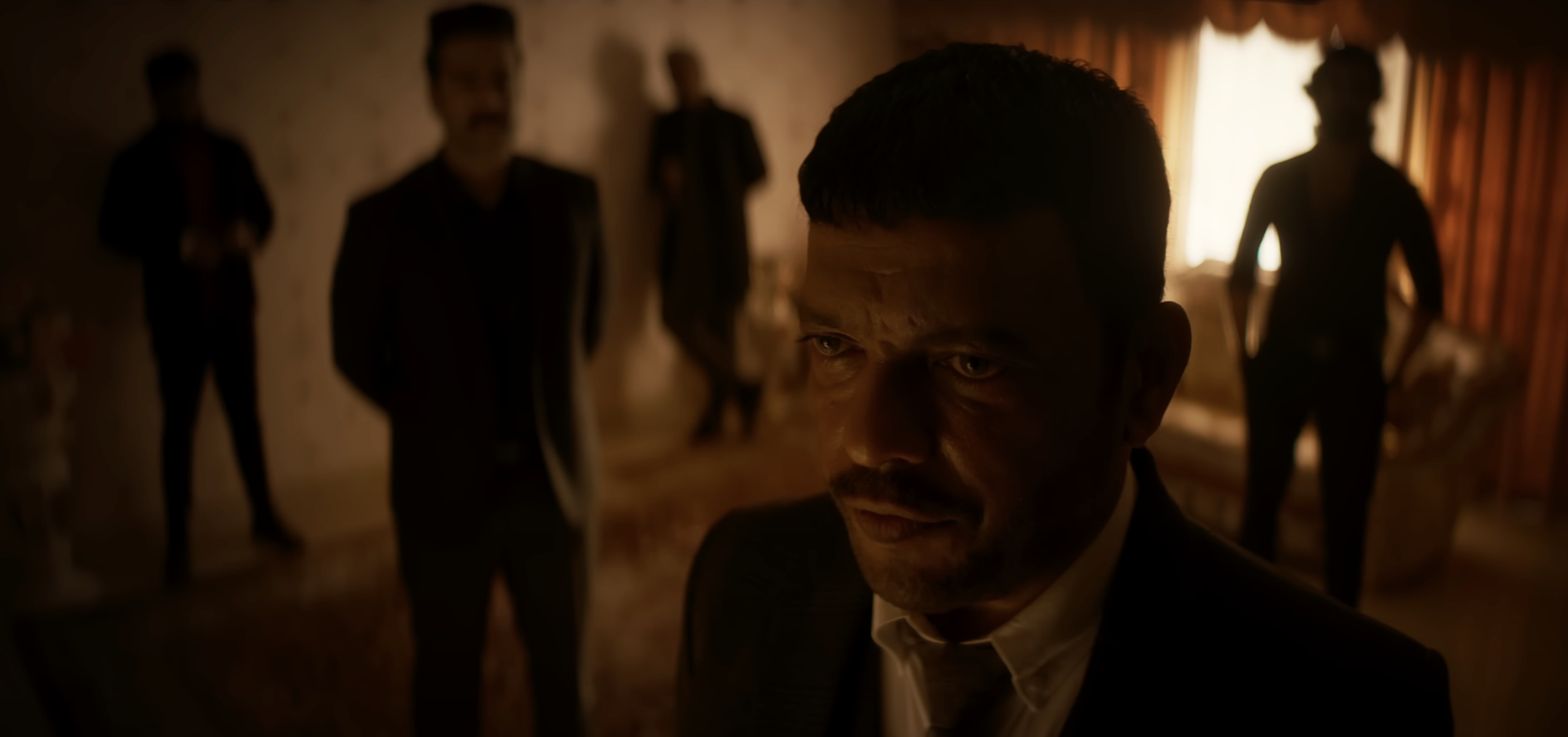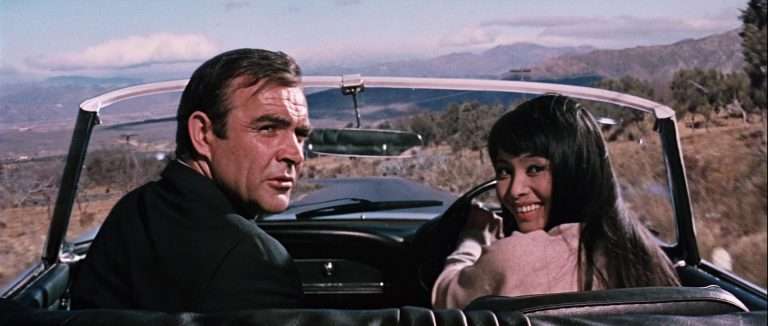There is a reason that the word “hero” has become synonymous with “protagonist” in Indian mainstream cinema; the lead role in a given mass masala film is almost always a morally upstanding and decent person who fights for the weak, even if they initially appear otherwise. Yet there has always been a craving for more “grey-shaded” roles from the filmgoing audience. Ajith Kumar’s iconic villainous turn in the Tamil film “Mankatha” (2011) had an impact that is still felt today, as the promise of a similar villainous role for “Thalapathy” Vijay from director Venkat Prabhu was a major selling point of “The Greatest of All Time.” Even “KGF”, one of the most influential franchises in current memory, is planning to bring back Yash’s Rocky bhai character who, as both films hurry to assure us, is not a hero but a “villain” and even a “monster!
There have been many “KGF” imitators since the first two films became a pan-Indian smash hit, the vast majority of which have been rightfully relegated to the dustbins of OTT due to their lack of originality. Yet on the other hand, the Malayalam film “Marco” has become an unlikely success story, going from opening on only 89 screens to over 1300 by its third week in theaters and receiving intense word-of-mouth hype in the Hindi-speaking belt even as “Pushpa 2: The Rule” continues its own rampage at the box office.
Like “Pushpa 2”, “Marco” is part of a series, yet as an unusual disclaimer at the start of the film clarifies, it is not a sequel, prequel, or starting any kind of cinematic universe, but rather is designed to stand on its own as a film. This is likely for the best as unlike “Pushpa,” the prior film in this continuity, 2019’s “Mikhael”, was a complete critical and commercial flop. However, the title character of “Marco” is the villain of “Mikhael”, which sets “Marco” up to achieve a true “lead villain” role the likes of which has not yet been seen.
The factor that separates “Marco” from the pack lies in its utilization of the “A” rating from the Indian Central Board of Film Certification, the equivalent of an “R” rating for an American film. Much as “Animal” did in 2023, “Marco” pushes the boundaries of what is typically seen in Indian commercial cinema and lives up to its growing reputation as the most violent Indian film in recent memory.
While “Animal” received complaints for its sexually prurient content and perceived glorification of a character who exemplifies all the worst excesses of male entitlement and abuse, “Marco” never once tries to sell you on the virtues of its title character. The plot unfolds at first in a typical way, with Marco’s beloved younger brother Victor being caught in the crossfire of a gang killing by another family that is part of the same criminal syndicate. However, even as his family mourns the loss, they fret about the unpredictable and ferocious retribution of their adopted brother Marco.
Not only do they shun him for his lack of a direct blood tie, but his penchant for extreme violence toward any possible threat to his family leads them to treat him with fear and distrust even though they are a criminal dynasty built on blood and bullet shells. While it is expected that a criminal family would take some kind of action on the death of one of their own, Marco’s singleminded path of vengeance soon drags his entire family down a blood-soaked path of horror and death.

The first half of the movie does seem to evoke “KGF” and “Animal” in equal measure. However, post-interval, “Marco” begins to draw with increasing confidence on global martial arts cinema, invoking legendary scenes from movies such as the Korean film “Oldboy” (2003) and the Marvel Netflix series “Daredevil” (2015). Unni Mukundan’s superb and magnetic lead performance pairs well with a level of fight choreography and camerawork that is rarely seen in Indian cinema, becoming one of the few films that actually competes on the standard of international action cinema along with other independent productions such as “Kill” or “Monkey Man” from the same year.
At first, its mass trappings seem predictable and rote but the capacity to show on-screen violence allotted by the A rating gradually evolves “Marco” into the territory of the kind of death and suffering that the typical mass film can only ever hint at to remain family-friendly. Gushing spurts of blood go beyond anything typically seen on screen in an Indian film, though they are clearly mostly created with CGI which keeps them from feeling too realistic, for better and for worse. Marco” is without a doubt a film whose extreme content, while not unheard of from East Asian or Western cinema or even TV shows such as “Breaking Bad“, will likely be shocking to audiences regardless, and this should be kept in mind before watching.
It would be disingenuous to describe “Marco” as uniquely cruel. Mass films routinely attempt to sell the audience on the sadism of their villains, usually at the expense of a business rival or unfortunate lackey. However, “Marco” takes the idea of the sadistic gangster and plays it out to horrifying reality. Where Marco’s own penchant for violence is disturbing to his family members, he soon finds himself engaged with foes whose cruelty matches or even exceeds his own. Throughout “Marco”’s runtime, dogs, children, and people with physical disabilities are all seen dying gruesome and painful deaths. Characters are dismembered with chainsaws, dissolved in acid, and blown up in a shower of limbs and gore. All of these are displayed on screen with excruciating clarity, being neither obscured nor cut away from.
Watching “Marco” leverage its “A” rating feels like watching the “R”-rated “Deadpool” for the first time after a string of PG-13-rated Marvel films. One can’t help but be reminded how other films deliberately shy away from blood and gore that would be expected byproducts of the type of combat with melee weapons they routinely display. The depiction of sickening impacts, open wounds, and sprays of blood add significant weight to the action in “Marco,” as it doesn’t need to cut away from the impact of a knife slashing a belly or an axe severing a limb. The editing and clarity of action scenes benefit heavily from not having to cut away from impacts at the last second and allow the impressive action choreography to be appreciated, even in intentionally disorienting and chaotic scenes.
While “Marco” has received comparisons to “Kill” in terms of action choreography, it does stop slightly short of the standard that would put it in that top echelon of modern fight choreography alongside “The Raid” or the “John Wick” movies. Nevertheless, it provides some of the best action scenes to be found in Indian cinema, period, and its range of physical locations compared to “Kill”, set almost entirely on a moving train, allows for some truly creative and memorable action setpieces.
Much like “Kill”, “Marco” does have a cogent reasoning for its high level of bloodshed. In the former film, the practiced, methodical, and almost effortless killing capacity of the lead character is juxtaposed with the relatively simplistic and unrefined fighting of the dacoit family he systematically exterminates, leading the audience to ponder the excessive and intentionally horrifying use of force by a trained upper-caste military soldier compared to the common goons he confronts.
While “Marco” treads similar ground at first, it takes a turn when the almost gleefully cruel violence meted out by Marco begins to be met in kind and even more. A typical mass movie may show the villain killing others for the slightest disrespect but then being deeply insulted by the hero and powerless to act. At worst, a family member of the hero is kidnapped or otherwise threatened with violence that the audience knows will be averted at the last minute. “Marco” is a film about what happens when these expectations are subverted.
*Spoilers for the film follow*
Where “Marco” truly shines is in what seems at first like a typical mass film climax. His family home is invaded by the opposing crime family, hell-bent on taking revenge for the killing of their patriarch, and Marco, who is repeatedly shown to care about protecting his family above all else, heads them off with the help of his older brother and father figure George D’Peter. Marco faces off against Cyrus the butcher, played with vicious aplomb by Kabir Duhan Singh, and is quickly overpowered, beaten into immobility, and forced to witness as Cyrus and his brothers brutally execute every member of Marco’s family, even the children, coating the whole house with their blood.
At this point “Marco” turns from an action film to a horror. In a scene that will test the audience’s tolerance, Victor’s girlfriend is slaughtered while giving birth to his son, and the newborn is forcibly pulled out and dangled in front of Marco to tease him with the prospect of Victor’s only son receiving the same gut-churning death by acid as his father.

When Marco finally rouses himself and goes into the final showdown, there is no triumph or catharsis, just a continuation of the nightmarish carnage. While the hero obtaining a minigun or similar powerful machine gun has become a cliché since “Kaithi” (2019), once again the sight of hordes of attackers mowed down in a hail of bullets carries an impact that less violent films can’t deliver. Liberal sprays of blood and severed limbs remind the viewer of the true impact of such heavy-duty weaponry. By this point, all characters involved have shed every ounce of humanity and have devolved into little more than frenzied animals.
The eradication of Marco’s family is a stomach-churning scene that is hard to sit through. Yet there is also a weight to the violence that other violent films lack. While a typical mass action film may kill a side character off for the sake of an emotional moment, Marco and the rival Isaac family engage in a brutal tit-for-tat where each side is ultimately unable to protect their own. This makes the stakes in the film feel significantly higher, as there is no expectation that anyone will be spared by plot contrivance or last-minute improbable heroism. Even by the end of the film, when Cyrus swings Marco’s newborn nephew over a vat of acid, there remains the sinking feeling that he might actually do it. Had he actually done so, however, the case for “Marco” fully crossing the boundaries of good taste would be much stronger.
*Spoilers end here*
It has become a trend to note that Malayalam films have ruled the roost of Indian cinema in 2024. However, most of the acclaimed Malayalam films of the year have received praise for their writing and nuanced characters firstly and their production values secondly. “Marco” is certainly winning no awards in the former category. Yet, having been produced on a budget of merely 30 crores, “Marco” does excel as a pure action film far beyond most of the year’s blockbusters which boast a tenfold or even greater budget. It does not look low-budget in any way, from the lavish opening title sequence to every single one of its action sequences.
By focusing on the kineticism of the action choreography and camera work, and by drawing inspiration from past iconic action films instead of the typical mass action film, the thin plot, one-dimensional characters, and cliched macho gangster trappings are more easily forgiven. Ravi Basrur’s soundtrack will delight those who enjoy the use of Anirudh-esque bassy club beats in their movies. The use of phonk elements gives the soundtrack a unique flavor but may date it poorly for those who associate the phonk genre with TikTok videos and memes. At the same time, anyone looking for a film that critically parses or criticizes the violent masculinity of the typical gangster movie is advised to skip this one.
“Marco’s” sharp execution of its technical aspects, paired with the “A” rating and a relatively low budget, has the potential to revolutionize how action films are made in India. Unfortunately, Indian film is still bogged down by the discussions of portrayal being equivalent to glorification, and a film like “Marco” will be accused of glorifying its violent scenes. Yet Marco is never remotely portrayed as a character that the audience would want to embody, and the horrific outcome of his bloody journey reminds the viewer of the consequences of a headlong embrace of violence among those who have no compunctions about wielding it. It feels almost like a deconstruction of the ultra-gritty gangster film, in which the violence quickly spirals out of control and begins to feel sickening rather than heroic.
It may be that filmmakers take the wrong lessons from this movie’s runaway success and begin to fill their works with gratuitous gore that seeks only to push the boundaries of extremity to draw audiences on shock value alone. The preferred outcome for action movie fans is that we instead begin to see an embrace of lower-budgeted A-rated films that deliver visceral, kinetic, well-choreographed, and shot action scenes and stay away from gimmicks. Even as mass films have exploded in scale and budget, the quality of action that they typically deliver has rarely matched up to the standard of action films from other countries. “Marco”, along with “Kill”, may herald the start of a new dawn of visceral Indian action cinema… but it’s okay if they tone it down a bit from here.

![Baba Baby O [2022] Review: Neither Deep in Its Theme, Nor Succeeding in Its Execution](https://79468c92.delivery.rocketcdn.me/wp-content/uploads/2022/03/Baba-Baby-O-2-768x512.jpg)

![Violence Voyager [2018]: Fantasia Film Festival Review](https://79468c92.delivery.rocketcdn.me/wp-content/uploads/2018/07/Violence-Voyager-2018-768x432.jpg)


![Hum Do Hamaare Do [2021] Review: An Inert Bollywood Rom-Com with Messy Intentions](https://79468c92.delivery.rocketcdn.me/wp-content/uploads/2021/10/Hum-Do-Humare-Do-Movie-Review-768x432.jpg)